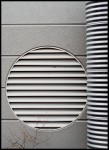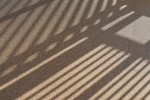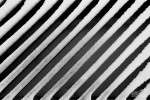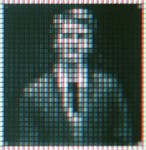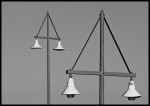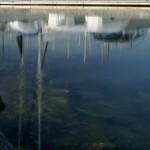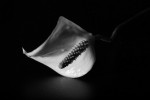About Abstraction
Most of the time you will want to capture your subject in a crisp and clear image so it’s recognizable and your viewer will know immediately what the subject is. In abstract photography you can leave more to your viewer’s imagination. Often, the subject of an abstract image is unrecognizable!
The objective of an abstract image is to illicit a sensory response from the viewer. Abstract photography can be anything from the extreme closeup of a macro photograph, to an arrangement of unidentifiable colorful shapes.
Compared to a literal photograph where the subject is clearly identifiable, the viewer becomes an active participant in interpreting the picture. During the interpretation process the photograph may become as much the viewer’s, emotionally, as the photographer’s. The success of an abstract picture is the feelings and imagination they produce in the viewer.
The abstract photographer deviates from many of the traditional rules of photography, they must still have some sort of visual organization and composition if the abstraction is going to be successful.
Nature provides a nearly infinite source of inspiration. You can see naturally occurring abstract images in the reflections on any body of water (moving streams to a calm pond), the colors and shapes of clouds (especially during sunrise and sunset), the repetition of sand dunes, abstract shapes of shadows cast on the ground, the beading up of raindrops, ripples on a pond.
The urban environment also offers a lot of inspiration. Look at reflective surfaces. The glass panes of a skyscraper, anything chrome like a car bumper or exhaust pipe, an outdoor scene spot through a window covered in raindrops or that is fogged over by consolidation, isolated elements of architecture, and infinitely more ideas.
Abstract image Gallery
Tips for Abstract Photography
- Remain abstract. The more literal your image, the less abstract it is. To interpret your subject more abstractly try moving closer or to one side, try capturing only it’s reflection of shadow.
- Trust in yourself. If an abstract scene catches your eye it’s a fair bet it will catch your viewer’s eye too. Go with your gut!
- Leading lines. Leading lines evoke a sense of continuity.
- Focus… or not. You can enhance abstraction by softening the focus. Do this by manually moving your lens’s focusing ring a little, using a soft focus filter, or applying a blur to your image with your editing program. You can also experiment with stretching various materials over your lens’s, like panty hose or lace.
- High or low key lighting. A high key image is one that is predominately light toned. Low key is the opposite, predominately dark tones. High and low key are good for conveying mood. Consider the effect of a high key image of a white flower with a white background that is lit with bright light.
Photography Credits
“Low Key” by Helmut Rec
“High Key” by Ben Alford
“Circle & Lines” by Jan Jurewicz
“Lamps” by Jan Jurewicz
“Reflections in Ripples” by Jay Sterling Austin
“Back and Forth” by Michael Dunn
“Light and Dark” by Dorian Bonner
“Pixellated” by Dorian Bonner
“Stripes” by Mark Dixon
“Light And Shadow” by erizof


